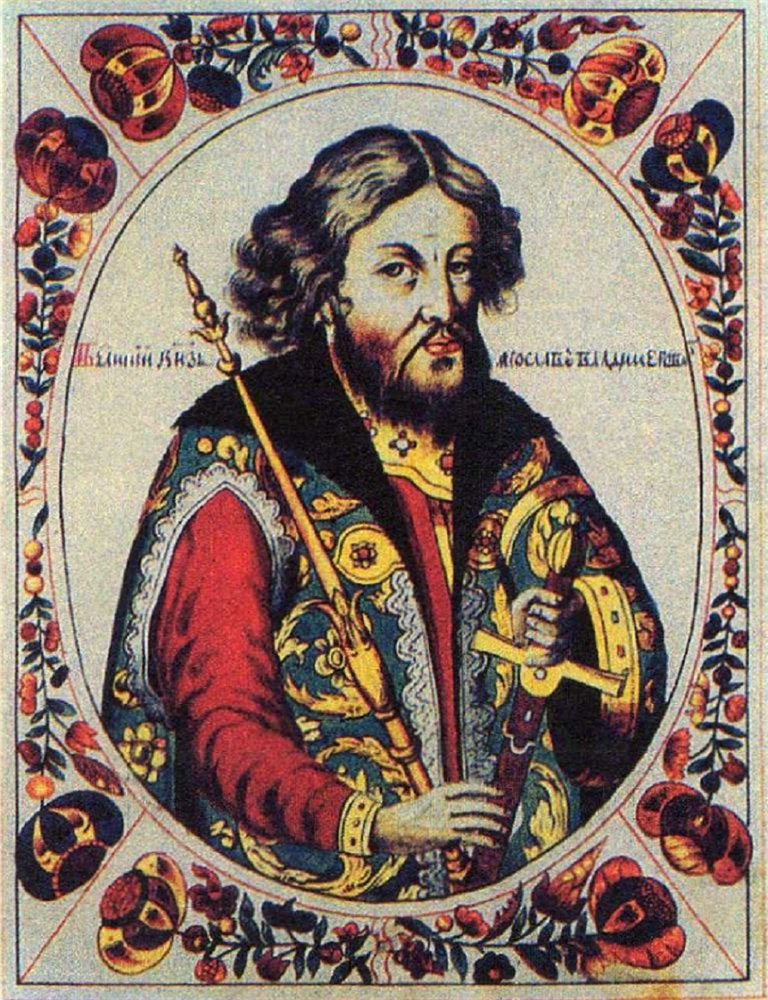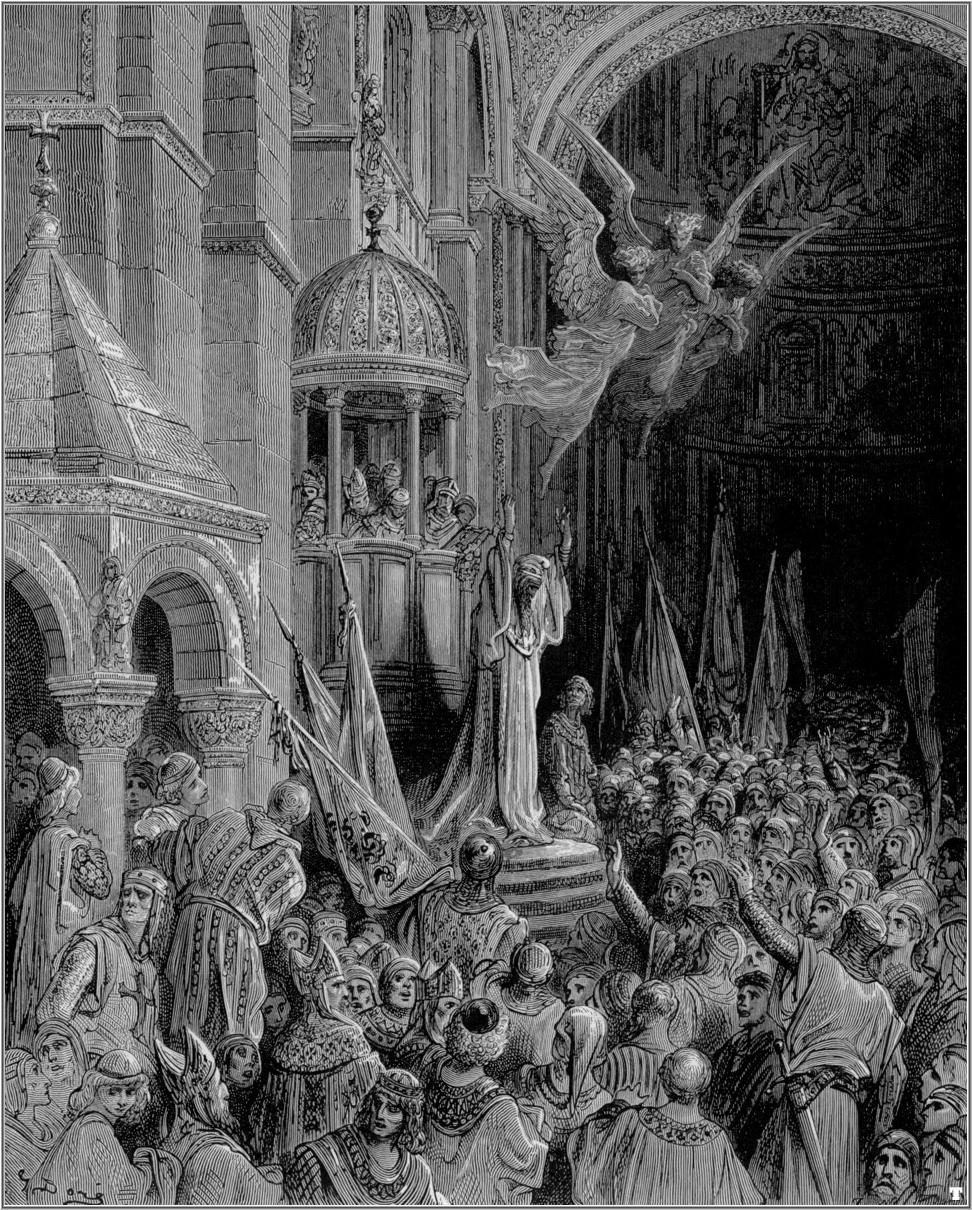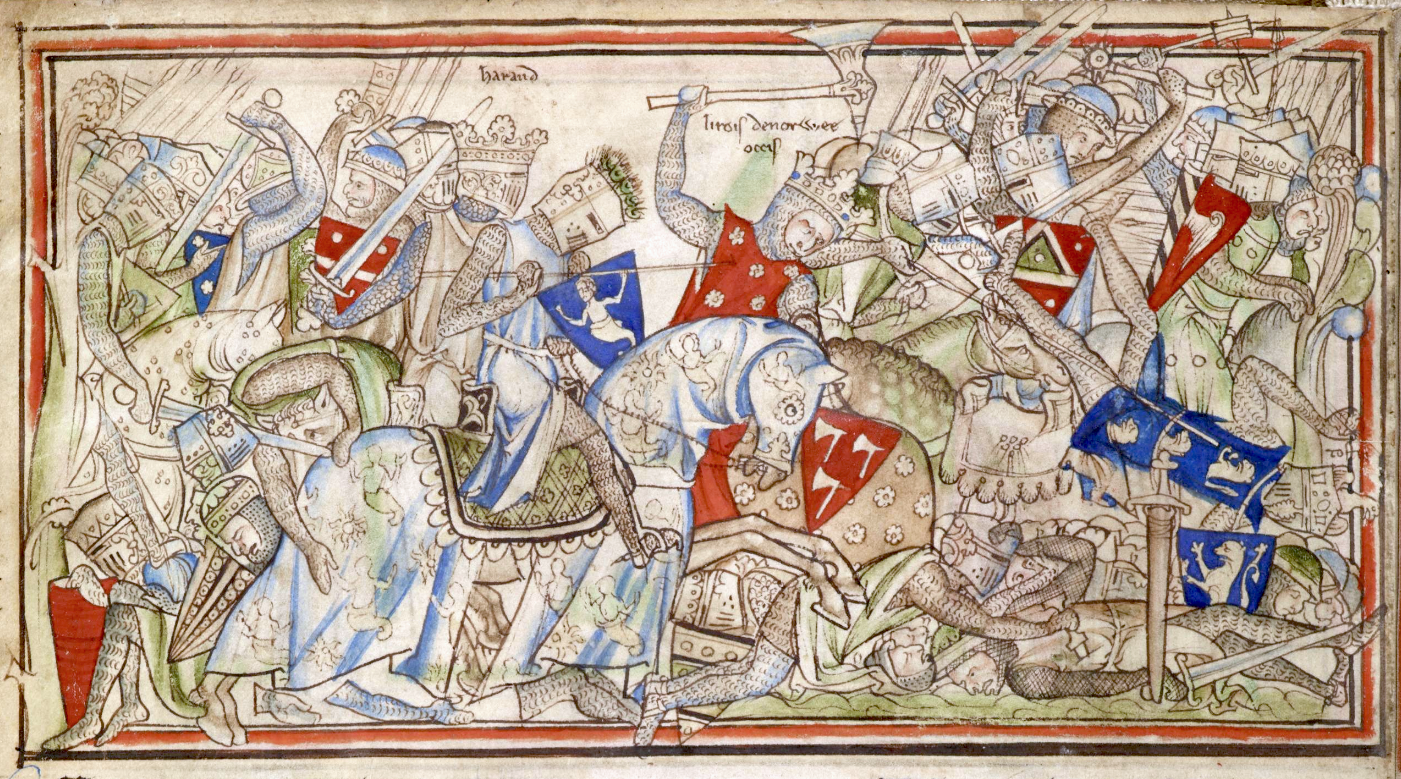|
Yakun
Yakun or Jakun, deriving from Old Norse ''Hákon'', was a Varangian (Viking) leader who is mentioned in the '' Primary Chronicle'' and in the Cave monastery in Kyiv. The chronicle tells that he arrived in Kievan Rus' in the year 1024 and fought in the Battle of Listven between the half-brothers Yaroslav I the Wise and Mstislav of Chernigov.Pritsak 1981:404Androshchuk 2004:44 According to Gudmund Jöran Adlerbeth of the Swedish Academy (1802), Yakun was identical with King Anund Jacob. Alternatively, the name Yakun could correspond to someone named ''Håkan'', unknown in the history of the era.Ernst Kunik (1844), ''Die Berufung der schwedischen Rodsen durch die Finner und Slaven''. St.-Petersburg: Kaiserlichen Academie der Wissenschafte/ref> Account Yaroslav had arrived in Novgorod and sent a request to Scandinavia that he needed Norse warriors. Yakun arrived as the leader of the Varangians and he was dressed in a robe that was woven with gold. In the autumn of 1024, Yaroslav and ... [...More Info...] [...Related Items...] OR: [Wikipedia] [Google] [Baidu] |
Anund Jacob
Anund Jacob or James, Swedish: ''Anund Jakob'' was King of Sweden from 1022 until around 1050. He is believed to have been born on July 25, in either 1008 or 1010 as ''Jakob'', the son of King Olof Skötkonung and Queen Estrid. Being the second Christian king of the Swedish realm, his long and partly turbulent reign saw the increasing dissemination of Christianity as well as repeated attempts to influence the balance of power in Scandinavia. Through out his regin he tried to subvert the rising Danish hegemony in Scandinavia by supporting the Norwegian monarchy. He also supported the reign of Yaroslav the Wise in Kievan Rus, his brother-in-law. He is referred to in positive terms in German and Norse historical sources. His reign was one of the longest in Sweden during the Viking Age and Middle Ages. Accession The main sources for Anund Jacob's reign are the near-contemporary ecclesiastic chronicle of Adam of Bremen and several Norse histories from the 12th and 13h centuries, in ... [...More Info...] [...Related Items...] OR: [Wikipedia] [Google] [Baidu] |
Šimon
Šimon (Old Norse: ''Sigmundr'') was a Varangian (Viking) whose story is related in the Kievan ''Patericon'' and his story concerns the creation of the Kievan cave monastery, where he is reported to have been its most important donor. Story Šimon was the son of Afrikan (ON: ''Afreki''), a king in the land of the Varangians. Afrikan was the brother of Yakun (ON: ''Hákon'') who took part in the Battle of Listven. When Afrikan died Jakun expelled Šimon and his brother Friand (ON: ''Friandi'').Androshchuk 2004:44 Šimon would live in Kievan Rus' for the rest of his life, and he first served Yaroslav I the Wise and later his son. In 1068, he joined Yaroslav's three sons in the Battle of the Alta River against the Polovtsians. It is reported that before the battle, saint Anthony of Kiev, predicted a dire outcome for the battle, but he also predicted that Šimon would be saved through a miracle. Šimon survived the battle, but he was severely wounded. Anthony took care of Šimon and ... [...More Info...] [...Related Items...] OR: [Wikipedia] [Google] [Baidu] |
Battle Of Listven
The Battle of Listven (1024) was part of the succession struggle following the death of Vladimir the Great (Volodymyr) in 1015. It was fought between Mstislav of Chernigov and Kievan forces supporting Yaroslav the Wise; Mstislav defeated Yaroslav. According to legend, the battle took place at night during a thunderstorm. Following the Baptism of Rus, Vladimir sent his son, Yaroslav, to govern Novgorod the Great in the north of the Rus' lands. Mstislav was sent to Tmutarakan, in the south (on the Sea of Azov). Upon Vladimir's death, his son Sviatopok "The Accursed" seized the throne and killed three of his brothers, Sviatoslav of Smolensk and the more famous Boris and Gleb, the first Russian saints. Sviatopolk was defeated by Yaroslav, who then challenged Mstislav for supremacy over Kiev. Mstislav marched on Kiev, but the Kievans rejected him. When he withdrew to Chernigov, northeast of Kiev, Yaroslav marched on him with an army of Varangians under Yakun but was defeated at L ... [...More Info...] [...Related Items...] OR: [Wikipedia] [Google] [Baidu] |
Yaroslav I The Wise
Yaroslav the Wise or Yaroslav I Vladimirovich; russian: Ярослав Мудрый, ; uk, Ярослав Мудрий; non, Jarizleifr Valdamarsson; la, Iaroslaus Sapiens () was the Grand Prince of Kiev from 1019 until his death. He was also the Prince of Novgorod on three occasions, uniting the principalities for a time. Yaroslav's baptismal name was George ( orv, Гюрьгi, ) after Saint George. Rise to the throne The early years of Yaroslav's life are mostly unknown. He was one of the numerous sons of Vladimir the Great, presumably his second by Rogneda of Polotsk, although his actual age (as stated in the '' Primary Chronicle'' and corroborated by the examination of his skeleton in the 1930s) would place him among the youngest children of Vladimir. It has been suggested that he was a child begotten out of wedlock after Vladimir's divorce from Rogneda and marriage to Anna Porphyrogenita, or even that he was a child of Anna Porphyrogenita herself. French historia ... [...More Info...] [...Related Items...] OR: [Wikipedia] [Google] [Baidu] |
Kyiv Pechersk Lavra
Kyiv-Pechersk Lavra or Kyivo-Pechers’ka Lavra ( uk, Києво-Печерська лавра, translit=Kyievo-Pecherska lavra, russian: Киево-Печерская лавра), also known as the Kyiv Monastery of the Caves, is a historic Eastern Orthodox Christian monastery which gave its name to one of the city districts where it is located in Kyiv. Since its foundation as the cave monastery in 1051, the Lavra has been a preeminent center of Eastern Orthodox Christianity in Eastern Europe. Together with the Saint Sophia Cathedral, it is inscribed as a UNESCO World Heritage Site.Kyiv Pechersk Lavra, St. Sophia Cathedral remain ... [...More Info...] [...Related Items...] OR: [Wikipedia] [Google] [Baidu] |
Sigvatr Þórðarson
Sigvatr Þórðarson or Sighvatr Þórðarson or Sigvat the Skald (995–1045) was an Icelandic skald. He was a court poet to King Olaf II of Norway, as well as Canute the Great, Magnus the Good and Anund Jacob, by whose reigns his floruit can be dated to the earlier eleventh century. Sigvatr was the best known of the court skalds of King Olaf and also served as his marshal (''stallare''), even baptizing his son Magnus. Approximately 160 verses of Sigvatr's poetry have been preserved, more than any for other poet from this period. The style of Sigvat's poems is simpler and clearer than that which generally characterises older compositions. Although his verse is still dense, he uses fewer complex poetic circumlocutions than many of his predecessors, and as a Christian poet, he by and large avoids allusions to pagan mythology. Most of his surviving poems were texts that praised King Olaf. Many of the poems from St. Olaf's saga in ''Heimskringla'' are by Sigvatr. ''Víkinga ... [...More Info...] [...Related Items...] OR: [Wikipedia] [Google] [Baidu] |
Skald
A skald, or skáld (Old Norse: , later ; , meaning "poet"), is one of the often named poets who composed skaldic poetry, one of the two kinds of Old Norse poetry, the other being Eddic poetry, which is anonymous. Skaldic poems were traditionally composed on one occasion, sometimes extempore, and include both extended works and single verses ('' lausavísur''). They are characteristically more ornate in form and diction than eddic poems, employing many kennings and heiti, more interlacing of sentence elements, and the complex '' dróttkvætt'' metre. More than 5,500 skaldic verses have survived, preserved in more than 700 manuscripts, including in several sagas and in Snorri Sturluson's '' Prose Edda'', a handbook of skaldic composition that led to a revival of the art. Many of these verses are fragments of originally longer works, and the authorship of many is unknown. The earliest known skald from whom verses survive is Bragi Boddason, known as Bragi the Old, a Norwegian skal ... [...More Info...] [...Related Items...] OR: [Wikipedia] [Google] [Baidu] |
Olaf II Of Norway
Olaf II Haraldsson ( – 29 July 1030), later known as Saint Olaf (and traditionally as St. Olave), was King of Norway from 1015 to 1028. Son of Harald Grenske, a petty king in Vestfold, Norway, he was posthumously given the title '' Rex Perpetuus Norvegiae'' ( en, Eternal/Perpetual King of Norway) and canonised at Nidaros (Trondheim) by Bishop Grimkell, one year after his death in the Battle of Stiklestad on 29 July 1030. His remains were enshrined in Nidaros Cathedral, built over his burial site. His sainthood encouraged the widespread adoption of Christianity by Scandinavia's Vikings/Norsemen. Pope Alexander III confirmed Olaf's local canonisation in 1164, making him a recognised saint of the Catholic Church and started to be known as ''Rex Perpetuus Norvegiae'' – ''eternal king of Norway''. Following the Reformation he was a commemorated historical figure among some members of the Lutheran and Anglican Communions. The saga of Olav Haraldsson and the legend of Ola ... [...More Info...] [...Related Items...] OR: [Wikipedia] [Google] [Baidu] |
Enrico Dandolo
Enrico Dandolo ( anglicised as Henry Dandolo and Latinized as Henricus Dandulus; c. 1107 – May/June 1205) was the Doge of Venice from 1192 until his death. He is remembered for his avowed piety, longevity, and shrewdness, and is known for his role in the Fourth Crusade and the Sack of Constantinople. Dandolo died in 1205 in Constantinople and was buried at the Hagia Sophia. Biography Early life and political involvement Born in Venice 1107, Enrico Dandolo was a member of the socially and politically prominent Dandolo family. He was the son of the powerful jurist and member of the ducal court, Vitale Dandolo, and had two brothers: Andrea and Giovanni. His uncle, also named Enrico Dandolo, was patriarch of Grado. Not much information exists on the younger Enrico before his father's death in 1174. This is because Vitale lived into his nineties and his sons were not emancipated until he died. Though Enrico was himself an elderly man at around 67, he was still under filial sub ... [...More Info...] [...Related Items...] OR: [Wikipedia] [Google] [Baidu] |
Haralds Saga Sigurðarsonar
''Haralds saga Sigurðarsonar'' is an Old Icelandic king's saga focusing on the career of King Haraldr Sigurðarson of Norway (popularly referred to in English as Harald Hardrada). The title ''Haralds saga Sigurðarsonar'' usually refers specifically to the account of Haraldr given in the collection of kings' sagas known as ''Heimskringla'' and attributed to Snorri Sturluson (1178/79–1241), though a substantially similar account is given in one of Snorri's main sources, the collection ''Morkinskinna'', which seems to have given the title ''Saga Magnús góða ok Haralds harðráða'' to the equivalent section. In the estimation of Alison Finlay and Anthony Faulkes, 'while ''Óláfs saga helga'' dominates ''Heimskringla'' as a whole, ''Haralds saga Sigurðarsonar'' achieves this status over the sagas of its final third, by virtue both of its length and of the compelling character of Haraldr himself'. Summary Although the saga contains no Common Era dates, its chronology is fa ... [...More Info...] [...Related Items...] OR: [Wikipedia] [Google] [Baidu] |
Snorri Sturluson
Snorri Sturluson ( ; ; 1179 – 22 September 1241) was an Icelandic historian, poet, and politician. He was elected twice as lawspeaker of the Icelandic parliament, the Althing. He is commonly thought to have authored or compiled portions of the '' Prose Edda'', which is a major source for what is today known as Norse mythology, and '' Heimskringla'', a history of the Norwegian kings that begins with legendary material in '' Ynglinga saga'' and moves through to early medieval Scandinavian history. For stylistic and methodological reasons, Snorri is often taken to be the author of '' Egil's saga''. He was assassinated in 1241 by men claiming to be agents of the King of Norway. Biography Early life Snorri Sturluson was born in (commonly transliterated as Hvamm or Hvammr) as a member of the wealthy and powerful Sturlungar clan of the Icelandic Commonwealth, in AD 1179. His parents were ''Sturla Þórðarson the Elder'' of ''Hvammur'' and his second wife, ''Guðný Böðvarsdó ... [...More Info...] [...Related Items...] OR: [Wikipedia] [Google] [Baidu] |

.jpg)






